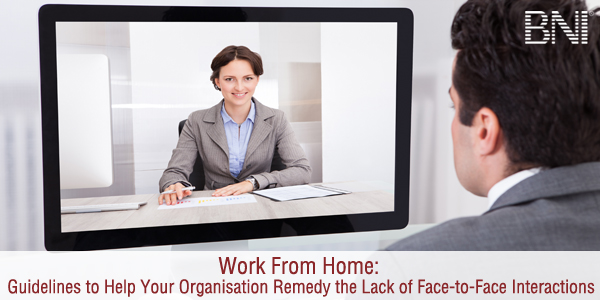Over the years many organisations have been slowly enabling their employees to work from home (popularly known as WFH). The advantages of WFH is going to make it even more popular in the years to come, and soon it will become the norm rather than the exception, so this is the perfect time for your organisation to start implementing WFH.
The major challenge you will face during the initial months of implementing WFH is the fact that employees will miss the personal face-to-face interactions of a normal office day, either amongst themselves or between you and them. Let us look at how it affects each interaction and also look at guidelines on how to overcome it and better integrate your newly dispersed workforce.
1. Between Employees
Today’s office layout makes it easy for everyone to communicate with each other, let us look at these two scenarios when an employee needs to check some important facts with:
- A colleague seated right next to them – The employee just has to look over to see if the other person is free (not on a call or some other discussion), and then just lean over to check the facts with them.
- A colleague seated across the room – They just have to stand up to check if they are free before walking across the room to speak to them.
Now when it comes to WFH your employees are not going to be able to see their colleagues to judge the situation and that will take a bit of getting used to. There will initially be a bit of hesitation on the part of an employee in calling up their colleagues to check a fact, wondering if they are free or on another call or caught up in some housework. This will lead to a delay in the completion of their work.
Remedy Guidelines
Team Discussions – Establish a common communication platform for the whole organisation and ensure that all the employees are on board with it before rolling out the WFH policy. You could select any one of the instant messaging apps available in the market. This can be established as the de facto means of communication between members of a team to coordinate amongst themselves for their respective projects.
One-on-One Communications – The instant messaging app can also be made the de facto standard for one-on-one communications as this will help everyone become more savvy with the app (encourage your employees to constantly check their phones for any updates so that there is no delay in queries being answered). While keeping other means of communication (phone calls, emails etc) also open, the de facto standard of always communicating doubts, information etc via the app will ensure that there is no delay in the work flow because of the hesitation factor (mentioned above).
2. Between You and Your Employees
Another challenge with WFH is your employees may feel a bit lost as they cannot approach you with any concerns they have or guidance they need. The lack of a visible support system will make them feel anxious and start affecting their work flow.
Remedy Guidelines
You need to let your employees know that you continue to be available to guide them and clear any doubts that may arise, this will give them the sense of security they need. Here are the guidelines to ensure a seamless transition in your interactions with your team and with all your employees.
- You can keep connected with individual members of your team by organising a one-on-one call at a specified time every day, where you can go through the work schedule and resolve any issues they face.
- Team meetings should also happen on a regular basis. There are numerous video conferencing software packages in the market that can be used for this purpose. The advantage of video conferencing is that it enables a more interactive discussion, similar to a face-to-face team meeting.
- Video conferencing can also be used to organise town hall meetings where you can address all the employees.
In this way it is possible to overcome the initial problems faced due to the lack of face-to-face interactions. In fact after the initial hiccups everyone will settle into the routine and enjoy the benefits of working from home.
